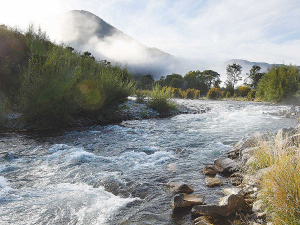Dairy farmers say over-stringent freshwater policies will cost New Zealand at least $80 billion in the next 30 years, but will not greatly improve water quality.
DairyNZ chief executive Tim Mackle says water quality limits under the Government’s proposed Essential Freshwater plan are so severe that the net result will be a significant economic loss regionally and nationally. But they may not yield the environmental gains hoped for.
“An $80 billion price tag equates to a cost of $38,000 for every household in the country, according to independent and robust economic analysis of the Essential Freshwater proposals,” he said.
These costs are three times higher in Southland, Taranaki and the West Coast, rising to around $120,000 per household over 30 years.
This will have a devastating impact on regional employment, Mackle says. The analysis predicts 800 more households in Southland and 1000 more in Taranaki with a breadwinner out of work.
“These are significant costs to be borne, particularly in rural communities, and they should not be taken lightly.
“These points emphasise the role of dairy farming as the economic engine of the regions where there is no guarantee another sector will replace it.”
By 2050 this will be costing the country $6b per year – equivalent to the cost of unmitigated climate change in that year, predicted by the OECD.
DairyNZ says its scientific understanding and economic modelling indicates there is a more pragmatic way to achieve similar environmental outcomes at less cost to the economy and communities. “To be clear, the Essential Freshwater policy isn’t all about economics or money,” said Mackle. “Healthy, swimmable waterways are important to all New Zealanders, including dairy farmers, who share the same aspirations to protect our rivers, lakes and wetlands.”
Up to 20% of New Zealand waterways run past or near a dairy farm and many of those farmers already strive to protect the environment. About 98% of waterways wider than 1m now exclude dairy cattle.
Mackle says farmers will do their bit, but water quality targets exist that better address scientific objectives at no great cost.
“DairyNZ is proposing an alternative approach to managing ecosystem health. This is based on strengthening existing standards for nitrogen toxicity to further protect sensitive indigenous species, alongside the proposed attributes for macro-invertebrates (MCI index) as the overall indicator of ecosystem health. Similar approaches are being proposed by regional councils.
“The New Zealand dairy sector is solutions-focused. Moving forward, it is crucial for the Government to work with the dairy sector.”
Key points
• DairyNZ’s economic modelling shows the proposed Essential Freshwater package could significantly harm New Zealand’s dairy sector and the wider national economy – by 2050, it could lead to a fall in our GDP of $6 billion.
• The proposal would result in significant declines in milk production and is a serious threat to the international competitiveness of New Zealand’s dairy sector.
• The economic analysis forecasts that by 2050 total milk production will fall by 24% and all exports by 5.2% or $8.1 billion.
• With the Zero Carbon Bill and its assumed reductions in methane considered alongside the Essential Freshwater reforms, the forecast showed an additional $1 billion loss ($7 billion) in GDP and another 4 percent reduction in milk production (28 percent).
• Proposed nutrient limits would impose a significant financial burden on the dairy sector. These limits – broadscale introduction of phosphorus and nitrogen leaching reductions in monitored catchments – are based on overly simplistic relationships and not supported by robust science.
• Southland, Taranaki, Marlborough and West Coast are likely to be most negatively impacted. By 2050, GDP could fall in Southland by up to 3.6%; Taranaki by up to 2.9%; Marlborough by up to 3.2% and West Coast by up to 2.9%.
• Less milk means 15-20% fewer jobs and reduced competitiveness in global markets.


















